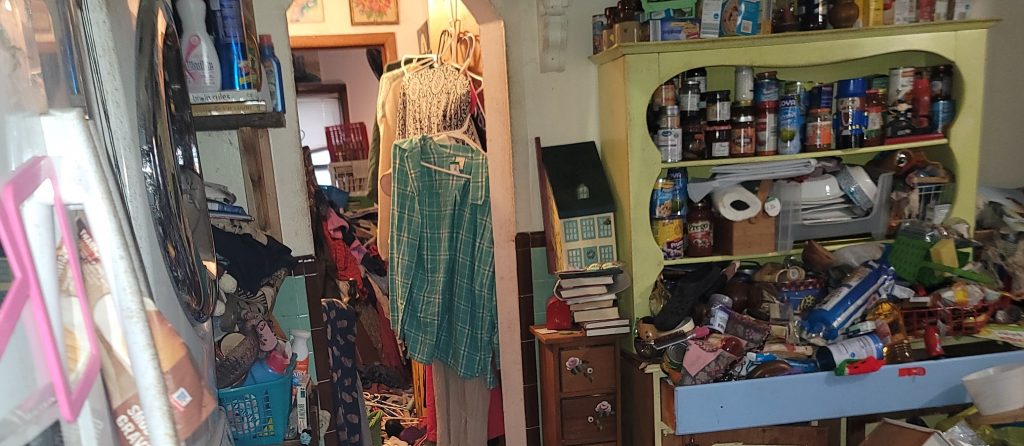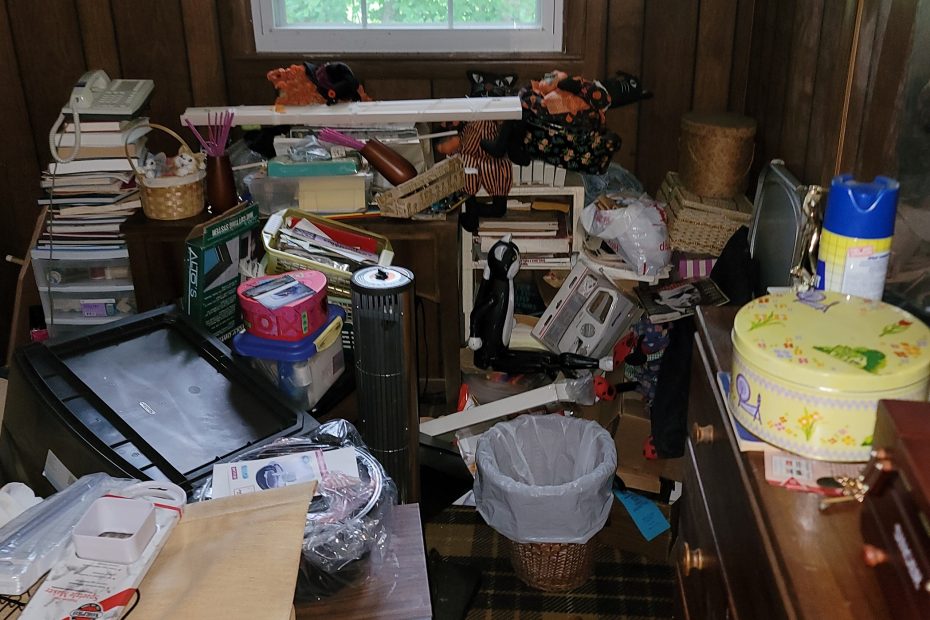Hoarding is a psychiatric disorder that often stems from anxiety and depression and disproportionately affects individuals sixty years of age or older. Hoarded items are not only an eyesore – they can pose health risks to the hoarder and others if they aren’t diagnosed properly and taken care of correctly. So, before you agree to help a friend or family member clean their hoarded home, it’s important that you make yourself aware of the risks and what may await you inside.
As you may have suspected, the homes of hoarders offer ample opportunities for biohazards to develop and hide out. Any of the following biohazardous materials may be present in a hoarder’s residence:
Mold
Mold can become problematic very quickly because it only needs two things to grow: moisture and an organic food source. Being packed full of clutter, old food, and animal waste, the homes of hoarders are prime locations for mold to take root and go undetected for long periods of time. When entering a home affected by hoarding, there is a much higher than usual likelihood that you could be inhaling mold, which is dangerous due to the illnesses and various respiratory issues it can cause.
Insects and Rodents
As a result of the large amounts of dirt and clutter, homes of hoarders often have rodent, roach, and bedbug infestations. As these insects and animals roam through the house, they may leave waste within the crevices of the clutter and get stuck inside it when they die. Because of this, animal droppings and even animal corpses are common sights in hoarded homes.
Human Urine and Feces
The urine and fecal matter of humans can also be found in cases of severe hoarding. More often than not, this happens for one of two reasons:
- High amounts of clutter make toilets and sinks difficult to access
- Unpaid bills and poor property maintenance result in a cutoff of toilet function
In any case, human waste products are important to look out for because they could very well be present in a hoarder’s home and cause illness during hoarding cleaning if you become exposed to them.
Animal Bodies and Waste
Animal hoarding is a common phenomenon, affecting nearly 40% of all hoarders. Coincidentally, animal hoarding is one of the most dangerous forms of the disorder because it can leave the hoarder’s home filled with biohazardous dead animals, fecal matter, and urine. According to data from the Anxiety and Depression Association of America, 80% of individuals who hoard animals have dead or dying animal bodies throughout their homes.
Dust
Dust is made up of dirt, clothing fibers, pollen, soil, and other particles commonly found in homes. It typically accumulates in areas that people don’t come in contact with on a regular basis, such as the tops of fans, surfaces of unused counters, and crevices around furniture or walls. As you might imagine, the sheer amount of clutter in hoarders’ homes makes it difficult to clean things on a regular basis, making dust buildup more likely and more extensive in houses affected by hoarding. This leads to poor air quality and potential respiratory issues for those in the home for extended periods.
Homes of hoarders may also contain the following:
- Mildew
- Sharps (needles, medical instruments, and sharp objects)
- Asbestos
- Rotting food
- Stressed property – damaged flooring, ceiling, walls, etc.

In addition to the presence of biohazards, extreme hoarding can also be dangerous due to the lack of basic sanitization. The hoarder may be unaware of the importance of cleanliness or unable to adequately clean around all the clutter in their home even if they wanted to, so ordinary cleaning tasks such as vacuuming, mopping, and disinfecting may go undone for long periods of time. Over the course of months and years, the dirt, dust, and bacteria that build up can pose a serious health hazard for the hoarder and their family members.
It should also be noted that entering a hoarded home also comes with physical dangers associated with the large amount of property inside. Large stacks of items may collapse or fall over, and clutter on the floors and stairways can cause you to trip. Paying extra close attention to your surroundings and watching your footing is essential when performing hoarder cleanup to prevent falls and other injuries.
Due to the extreme amounts of clutter, dirt, and biohazards that are often present, it is possible to get sick from cleaning a hoarder’s home. Personal protective equipment (PPE) such as dust masks and gloves can help shield you from direct contact with bacteria and viruses and are always recommended during any hoarding cleaning endeavor.
For optimal safety and the most efficient results, contact ServiceMaster by Replacements for our hoarding cleanup services to assist you with the cleaning process. Our IICRC-certified professionals will use the latest tools and techniques to remove years of clutter and debris from your property.







